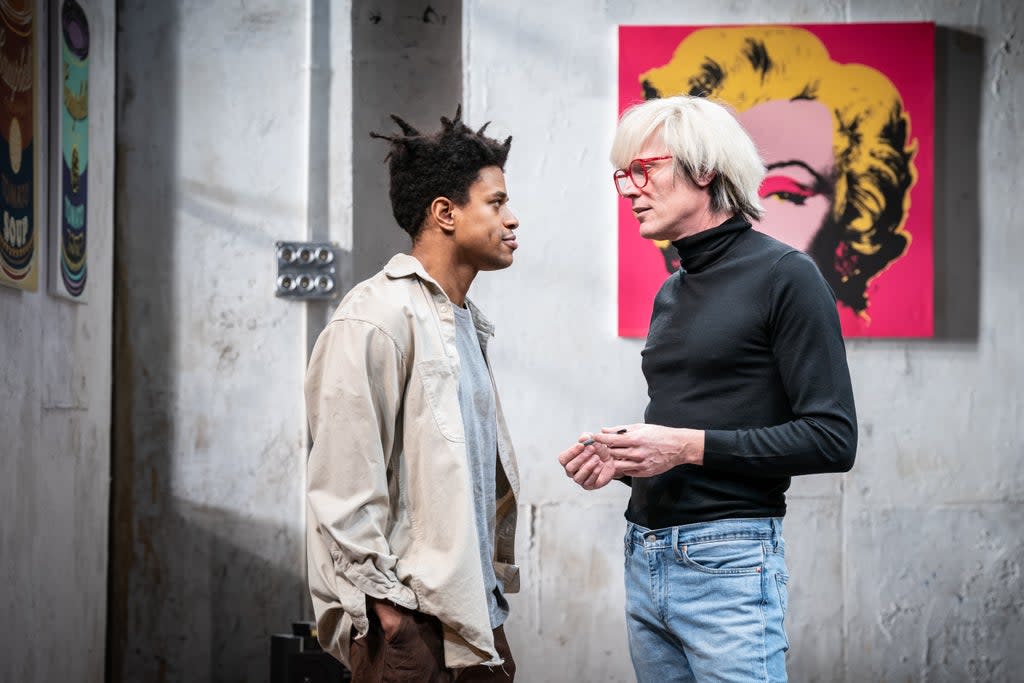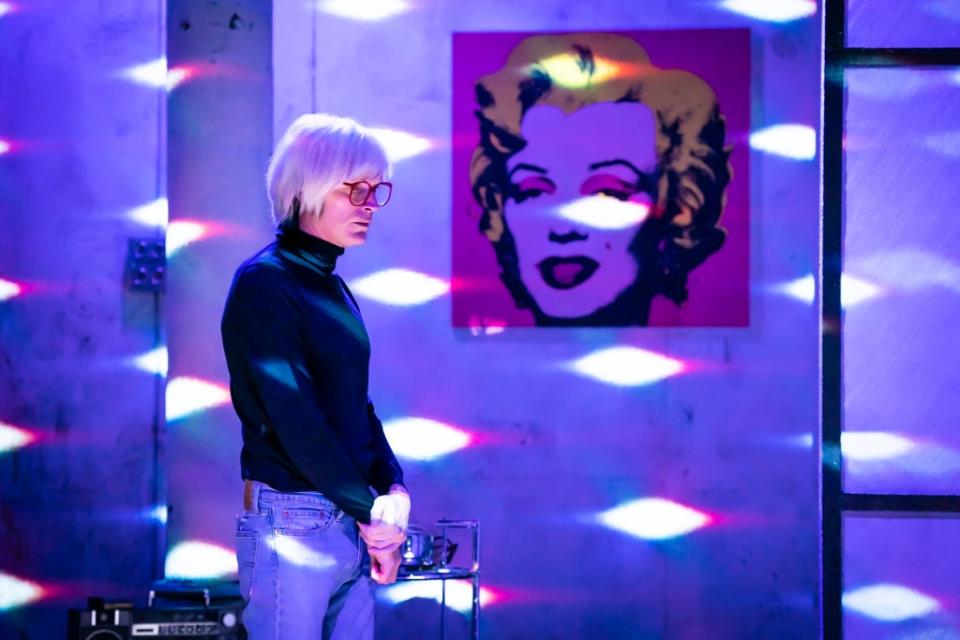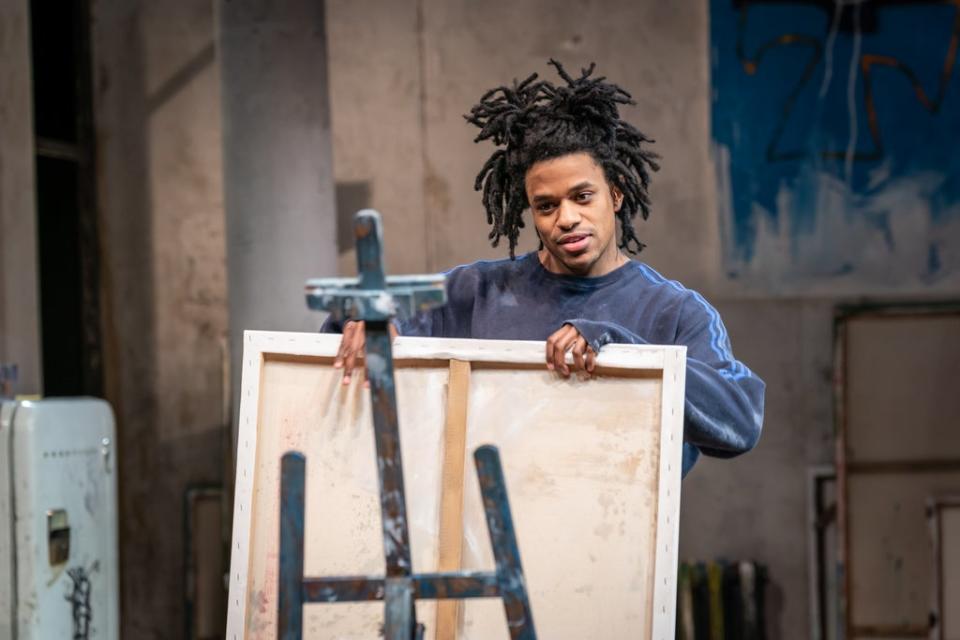The Collaboration at the Young Vic review: gee, wow - Basquiat and Warhol play brings fireworks to the stage

Paul Bettany makes a triumphant return to the London stage in this account of Andy Warhol’s fraught 1984 collaboration with Jean-Michel Basquiat. His gorgeous performance as the etiolated peddler of silk-screen soup cans is matched by American hotshot Jeremy Pope’s expressive reading of the Haitian/Puerto Rican enfant terrible. The dense and fascinating script by Anthony McCarten, writer of biopics The Two Popes, Darkest Hour and Bohemian Rhapsody, gives them plenty of big themes – art, commerce, identity, faith, death – to chew on.
There’s a synergy here that director Kwame Kwei-Armah usefully cultivates: Bettany returning to theatre after 25 years, fourteen of them spent in Marvel’s Avengers franchise; Warhol returning to paint after 25 years of parties, gossip and lucrative printmaking; Pope, nominated for two separate Tony Awards in his first year on Broadway and catapulted to success like Basquiat. The parallels aren’t exact, but there’s both an empathy and a tension between the actors and their roles.
It starts abysmally with Alec Newman as the two artists’ heffily egg-zented Swiss dealer Bruno (Alec Newman) filling us in on the backstory. Warhol’s prices are dropping. He’s just been shot by Valerie Solanas. Meanwhile former street kid Basquiat is churning out canvases for dizzying piles of cash. “Painters are like boxers,” Bruno says. “They both smear their blood on canvas.” Right. Got it. Thanks.

But gee, wow – as Andy might say – fireworks really start to happen when the two men meet. Bettany’s Warhol is prissy, controlling and self-involved, Pope’s Basquiat expansive and self-destructive, with the ungoverned energy of a hyperactive child and his signature sea-anemone afro.
There’s a palpable repulsion and attraction between them, and a social and racial tension too. Warhol and the wider art world fetishise Basquiat’s blackness, and his outsider status (actually, as Andy points out, he was the expensively educated son of an accountant). The exclusively masculine atmosphere is only underlined by a brief but effective appearance by Sofia Barclay as one of Basquiat’s many exes.

Both men have seen death close up and both crave some kind of immortality. The issue of the commodification of art, accelerated by Warhol and epitomised by Basquiat’s graffitied fridge full of dollars, feels current. So, too, does the killing of the graffiti artist Michael Stewart by police. There’s a powerfully disturbing moment when Basquiat becomes lost in the colours of Polaroids he took of his friend’s injuries.
McCarten’s script drops names (Yoko, Mick and Jerry, Steve Jobs) and well-crafted one-liners in a way that’s self-conscious but effective. Kwei-Armah’s zingy production takes place in a white space by Anna Fleischle, subtly altered to represent Bruno’s gallery and each artist’s studio. It’s augmented with chilly, projected Manhattan visuals and thumping 80s tunes from Video DJ Xana.
Star casting and all, the production feels like a glitzier but richer companion to John Logan’s earnest 2009 play Red, which featured Alfred Molina as Mark Rothko and covered similar territory. It’s a deeply showy exploration of artifice. To quote one of Basquiat’s favourite expressions: boom, for real.
Young Vic Theatre, to 2 April; youngvic.org


